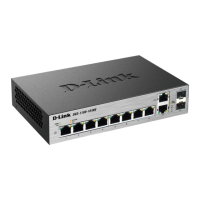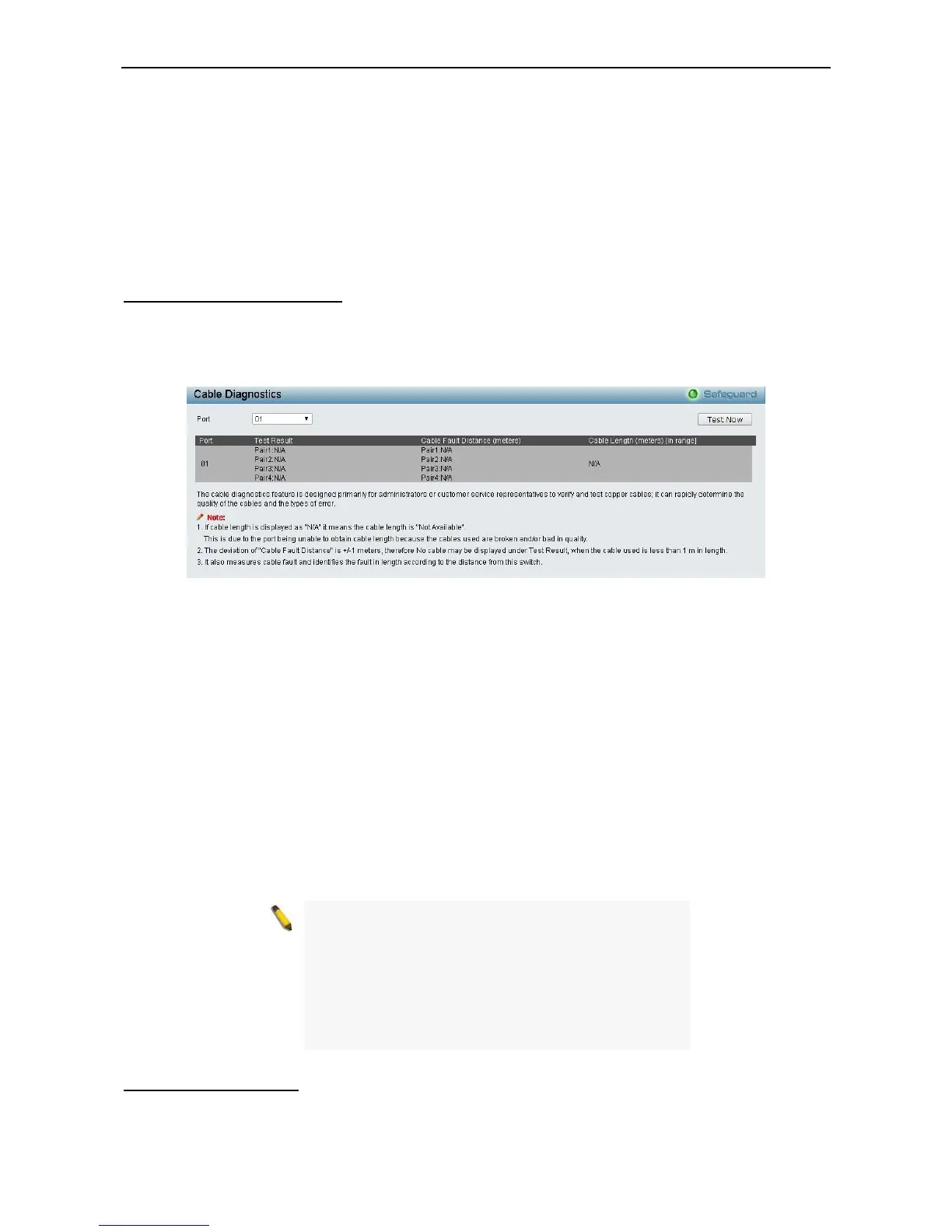LateColl: Counts the number of times that a collision is detected later than 512 bit-times into the
transmission of a packet.
ExColl: Excessive Collisions. The number of packets for which transmission failed due to excessive
collisions.
Show/Hide: Check whether or not to display SingColl, MultiColl, DeferTrans, LateColl and ExColl errors.
Clear: Click to clear all statistic counters on this window.
View Table: Click to display a table rather than a line graph.
View Line Chart: Click to display a line graph rather than a table.
Monitoring > Cable Diagnostics
The Cable Diagnostics is designed primarily for administrators and customer service representatives to
examine of the copper cable quality. It determines the type of cable errors occurred in the cable.
Select a port and then click the Test Now button to start the diagnosis.
Figure 4.128 - Monitoring > Cable Diagnostics
Test Result: The description of the cable diagnostic results.
•OK means the cable has a good connection.
•Short in Cable means the wires of the RJ45 cable may be in contact somewhere.
•Open in Cable means the wires of RJ45 cable may be broken or the other end of the cable is simply
disconnected.
•Test Failed means an error occurred during cable diagnostics. Please select the same port and test again.
Cable Fault Distance (meters): Indicates the distance of the cable fault from the Switch port, if the cable is
less than 2 meters, it will show “No Cable”, whether the fiber is connected to the port or not.
Cable Length (meter): If the test result shows OK, then cable length will be indicated for the total length of
the cable. The cable lengths are categorized into four types: <50 meters, 50~80 meters, 80~100 meters and
>100 meters. Deviation is +/-2 meters, therefore "No Cable" may be displayed under "Test Result," when the
cable used is less than 2 m in length. This test can only be performed when the port is up and operating at 1
Gbps.

